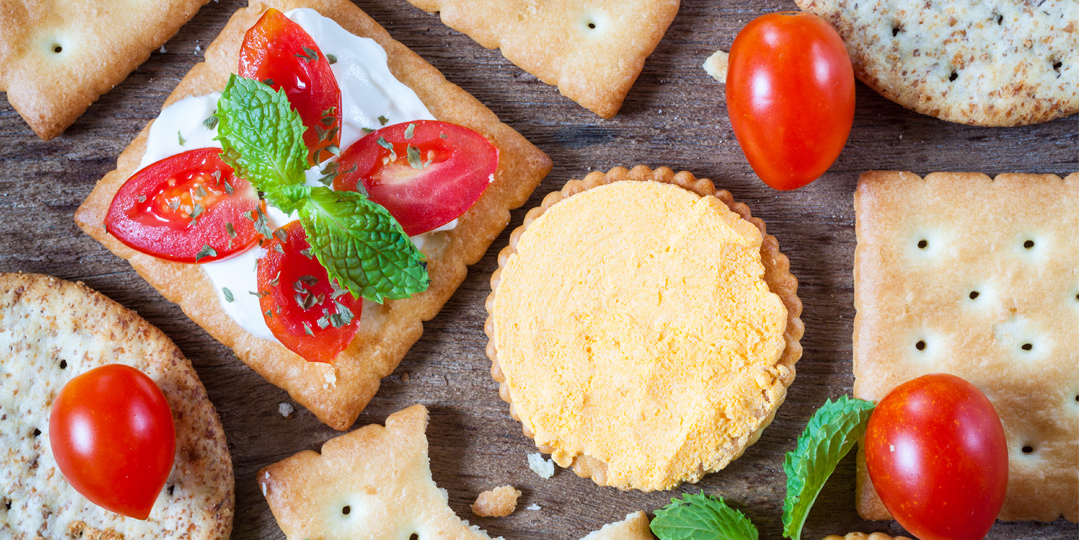A midnight snack might be the key to working overnight
By Annabel Mansfield
 SOCIETY AND CULTURE Research has found that a simple snack – for example, cheese, crackers and pretzels was one of the snacks given to study participants – was the best choice for maximising alertness and productivity.
SOCIETY AND CULTURE Research has found that a simple snack – for example, cheese, crackers and pretzels was one of the snacks given to study participants – was the best choice for maximising alertness and productivity. Eating a snack just after midnight might the best way for shiftworkers to power through the night, according to new research by UniSA.
If you’re one of Australia’s 1.4 million shiftworkers, eating at irregular times is par for the course – but in the first study of its kind, researchers investigated how eating patterns can affect performance.
Testing the impact of either a snack, a full meal, or no food at all shortly after midnight, the study found a snack was the best choice for maximising alertness and productivity.
Lead researcher and UniSA PhD candidate Charlotte Gupta says the finding has the potential to help thousands of shiftworkers who work during the night.
“In today’s 24/7 economy, working the nightshift is increasingly common, with many industries – health care, aviation, transport and mining – requiring employees to work around the clock,” Gupta says.
“As a nightshift worker, finding ways to manage your alertness when your body is naturally primed for sleep can be really challenging.
“We know that many nightshift workers eat on-shift to help them stay awake, but until now, no research has shown whether this is good or bad for their health and performance.
“The findings will inform the most strategic eating patterns on-shift and can hopefully contribute to more alert and better performing workers.”
In Australia, of the 1.4 million shiftworkers, 15 per cent regularly work a night or evening shift. Working at night-time conflicts with a person’s internal circadian clock, making it harder to stay focused and awake. Managing fatigue is critical for workplace health and safety.
Over a 7-day simulated shiftwork protocol, the study assessed the impact of three eating conditions: a meal comprising 30 per cent of energy intake over a 24-hour period (for example, a sandwich, muesli bar, and apple); a snack comprising 10 percent of energy intake (for example, just the muesli bar and apple); and no food intake at all. The meal or snack was consumed at 12:30am. The 44 participants were randomly split into the three test-conditions and were asked to report on their levels of hunger, gut reaction and sleepiness.
The results showed that while all participants reported increased sleepiness and fatigue, and decreased vigour across the nightshift, consuming a snack reduces the impact of these feelings more so than a meal or no food at all. The snack group also reported having no uncomfortable feelings of fullness as noted by the meal group.
Gupta says the next step in the research is to investigate the different types of snacks and how they affect shiftworkers differently.
“Now that we know that consuming a snack on nightshift will optimise your alertness and performance without any adverse effects, we’re keen to delve more into the types of snacks shiftworkers are eating,” Gupta says.
“Lots of shiftworkers snack multiple times over a nightshift, and understanding the different macronutrient balances is important, especially as many report consuming foods high in fat, such as chips, chocolate and fast foods.
“We’re keen to assess how people feel and perform after a healthy snack versus a less-healthy, but potentially more satisfying snack like chocolate or lollies.
“Ultimately, the goal is to help Australian shiftworkers on the nightshift to stay alert, be safe, and feel healthy.”
The study was conducted at UniSA’s Behaviour-Brain-Body Research Centre.
Other Stories
- A midnight snack might be the key to working overnight
- Memory warning to those wanting to spice up their lives
- Study indicates causal link between obesity and multiple diseases
- Dragonflies are helping make driverless cars safer
- From the Vice Chancellor
- Achievements and Announcements
- Sixteen images that will change how you view research
- Technology preventing hospital falls explained through animation
- Refurbished spaces for Aboriginal students open at City East and Magill
- Healthy lifestyle may counteract genetic risk of dementia
- Video: See highlights from the first six months of 2019
- UniSA visual artist represented on world stage at Cairo Biennale
- Students and staff to provide a ‘hand up’ to help the homeless
- The latest books from UniSA researchers
- UniNationals and Crows lunch




